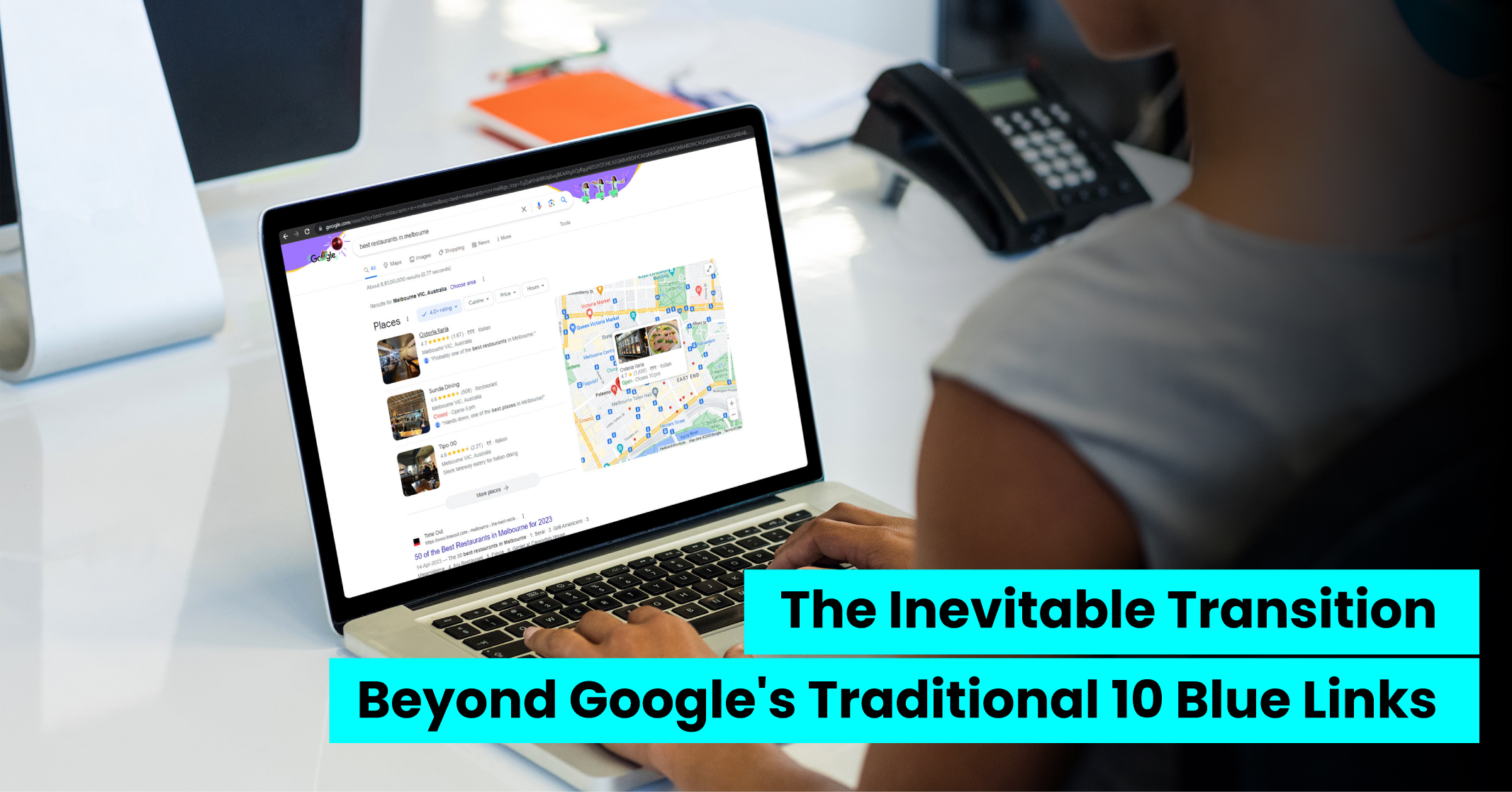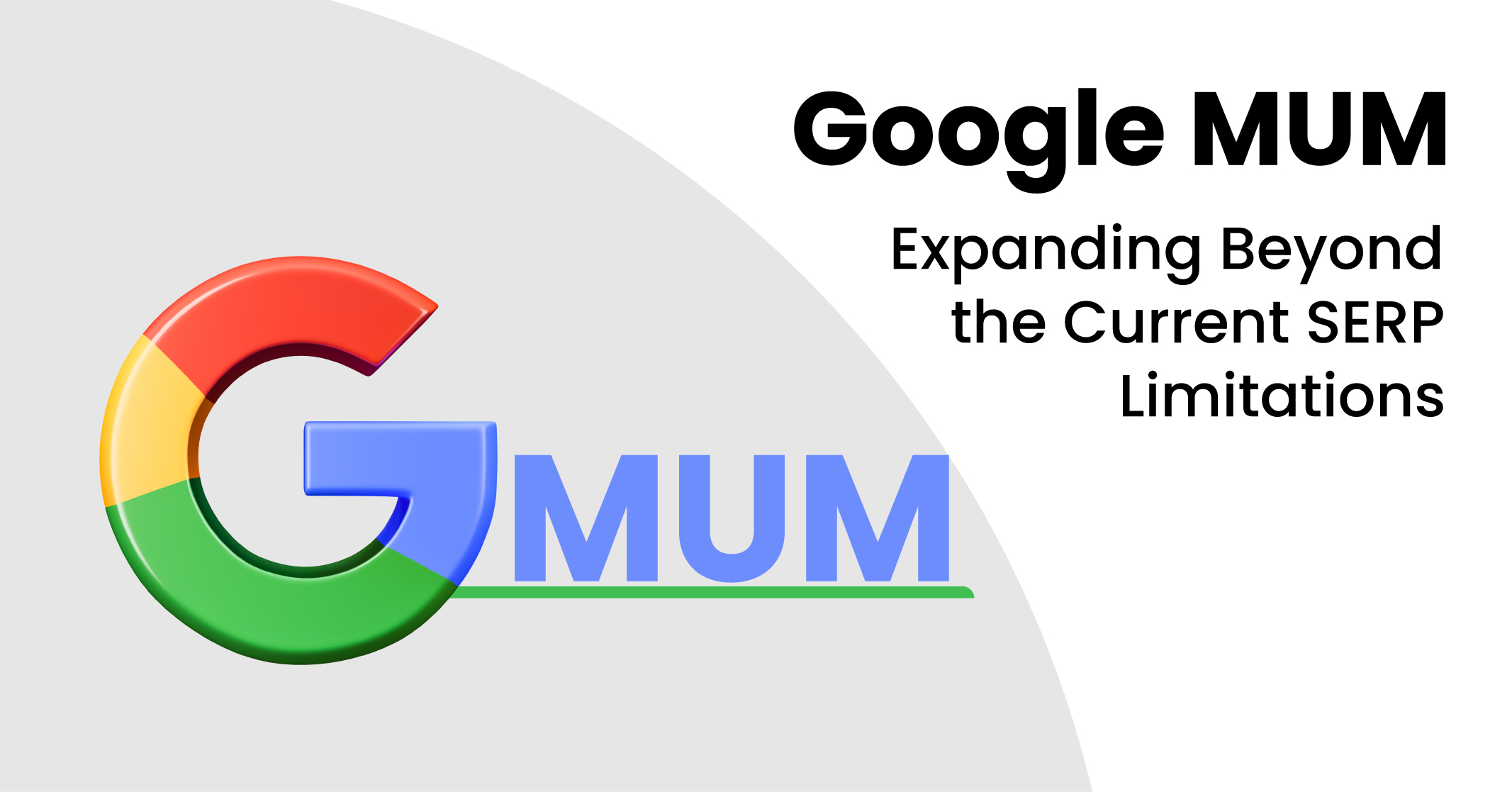I hope you enjoy reading this blog post.
If you want to get more traffic, Contact Us

Click Here - Free 30-Minute Strategy Session
Be quick! FREE spots are almost gone for this Month. Free Quote

Despite the ongoing discussions regarding topics such as 0-click searches and the increasing presence of SERP features, it is essential to recognise that Google’s search results fundamentally revolve around the concept of blue links. While the term “10 blue links” may not be entirely accurate, as the number varies slightly between desktop and mobile interfaces, the arrangement of organic search results remains a foundational element of the search engine results page (SERP).
Even when SERP features appear to dominate, the stack of organic listings remains at the core of the SERP experience. However, it is worth considering the potential future demise of this traditional format.

Click Here – Free 30-Minute Strategy Session
Be quick! FREE spots are almost gone for this Month
Several reasons contribute to this possibility.
Before delving into the reasons why we believe the traditional concept of 10 blue links will gradually become obsolete, it’s essential to grasp the essence of organic listings on Google’s search engine results page (SERP). We are not referring to their appearance, functionality or purpose, as those aspects are generally well-known. Instead, we are interested in what these “blue links” reveal about Google, users and the broader concept of the search itself.
Analogously, the organic results on the SERP can be likened to a business trip. When you embark on a business trip, your intention is not to explore or immerse yourself in the city’s culture. Instead, you have a specific goal or purpose to fulfill and once that is achieved, you promptly move on.
Similarly, the organic results, represented by a set of links to approximately 8 or 9 web pages, resemble a business trip. You visit a page, obtain the necessary information and swiftly exit.
What Does It Mean?
The issue lies in the fact that the acquisition of knowledge and information is not akin to a brief business trip. To truly grasp a subject’s essence, one needs to immerse themselves in its intricacies.
Consequently, the way Google presents the SERP and its blue links will inevitably evolve to accommodate this need for a more holistic exploration of topics.
The process of constructing knowledge is far more intricate than simply posing a question and receiving a straightforward answer. If this were the sole concern of searchers, there would be no need for the “10 blue links” on the search engine results page (SERP) or any URLs, for that matter.
Google’s Direct Answers feature would suffice for most of these users, potentially requiring just one URL within a Featured Snippet that may or may not be clicked on.
Why does this process unfold in such a manner? It is because people strive to feel comfortable with their purchase decisions. And to achieve that comfort, they seek familiarity. They construct a mental framework or scheme, gaining an understanding of the product, its benefits, alternative options and potential considerations and only after this extensive process, do they feel prepared to make a purchase.
SERP Features List: An Overview
Google, through its Knowledge Panel, primarily serves two fundamental purposes:
Now, let’s compare this to how Wikipedia approaches a similar entity:
It’s important to note that Google has demonstrated glimpses of the ability to segment a topic for easy exploration within the SERP.
SERP Features Examples: A notable example is the “COVID” SERP: In this instance, Google segments the overarching topic of COVID into distinct components, allowing users to explore the different aspects that contribute to the broader subject, at least at an initial level of exploration.
However, SERPs that do not adopt such a segmented approach fail to provide a genuine pathway for comprehensive exploration.
Likely, Google is already aware of this limitation. The concept behind Google’s development of the Multitask Unified Model (MUM) is likely centred around creating a SERP that enables users to explore topics comprehensively, dynamically and with differentiation.
This suggests that Google recognises the need for an enhanced search experience that facilitates deeper exploration and understanding.

MUM addresses the lack of exploration within the current SERP framework by introducing new capabilities that surpass Google’s existing abilities. As a “unified model,” Google MUM can comprehend information across various media formats, including text and images, with the potential for more formats in the future. This implies a SERP that incorporates diverse media types, leading to a different formatting approach.
Furthermore, the Google MUM update aims to analyse and break down queries and topics into segmented information, anticipating the various needs of users. This comprehensive and multi-layered approach to providing information on the SERP requires a reformatting of the current SERP.
Instead of presenting a list of 9 or 10 options that largely address the same thing (or a few options for multiple intents), Google will need to delve deeper, enabling users to explore each relevant aspect of information more substantially.
MUM intends to predict the diverse needs associated with a query and provide specific assets such as:
However, the current SERP format cannot adequately support this concept and makes no substantial efforts to do so.
The closest we come to accommodating multiple intents is when Google presents multiple organic results or SERP features that cater to different aspects. Yet, this approach is limited, as it combines various URLs and features without clear demarcation, resulting in a disorganised mix.
While Google has introduced features like “Refine this search” and “Broaden this search” as early indications of MUM, these elements are merely add-ons and do not fundamentally transform the SERP to enable significant exploration.
The SERP remains a construct that inadequately supports scheme building and in-depth exploration, apart from sporadic elements scattered throughout.
In all honesty, I have been skirting around the fundamental problem with the current structure of organic results. The issue lies in their reliance on queries rather than users.
What Do We Mean by This?
Google has long advised website owners to create content that prioritises the user’s needs. This is valuable advice but until recently, Google lacked the technology to fully follow it.
When serving organic results, Google’s focus is on understanding the query itself rather than the user behind it. Over the past few years, Google has made strides in comprehending the latent implications and user intent behind a query.
What To Know?
In other words, instead of solely interpreting the possible meanings of a query, a user-focused approach would consider the peripheral topics and extensions that the query and its various meanings touch upon.

The ideal SERP should function as a comprehensive content portal, offering users access points to a wide range of topically relevant material. If users need to construct knowledge and explore different aspects, the SERP should provide multiple “rabbit holes” that they can delve into.
Moreover, the SERP should provide contextual information about relevant entities. For instance, in Bettis’ case, information about the school he attended (Notre Dame) would help users better understand the significance of his association with the institution’s sports program.
In essence, for the SERP to serve as a true information portal, it needs to move beyond simply listing URLs on a results page. This doesn’t mean excluding organic results from the SERP of the future.
On the contrary, we envision and hope that a variety of URLs addressing different topics, subtopics, and media formats will be presented. However, the traditional approach of displaying a simple list of results from 1 to 10 is not effective nor should it be the backbone of the future SERP.
Types of SERP Features: There are several types of SERP features that search engines like Google employ to enhance user experience and deliver relevant and diverse information.
These features include:

Implementing the vision, we have described represents a significant shift and essentially introduces a new product for search engines like Google. Moving away from the tried-and-true model that has generated billions of dollars is no easy task.
The traditional blue links have been effective and continue to serve their purpose to a large extent. However, we believe Google recognises the need to evolve toward a more portal-like model, as suggested by the potential of MUM.
Conclusion: The real question is not just whether Google will deviate from the traditional SERP and its presentation of organic results but to what degree. Will it hesitate to fully embrace a departure from the conventional SERP or will it eagerly embrace a new framework?
Regardless of the approach taken, a sudden and drastic shift seems unlikely. Instead, we can anticipate a gradual transition as new technologies and advancements are incorporated into the search engine’s algorithm.

LEAVE A REPLY